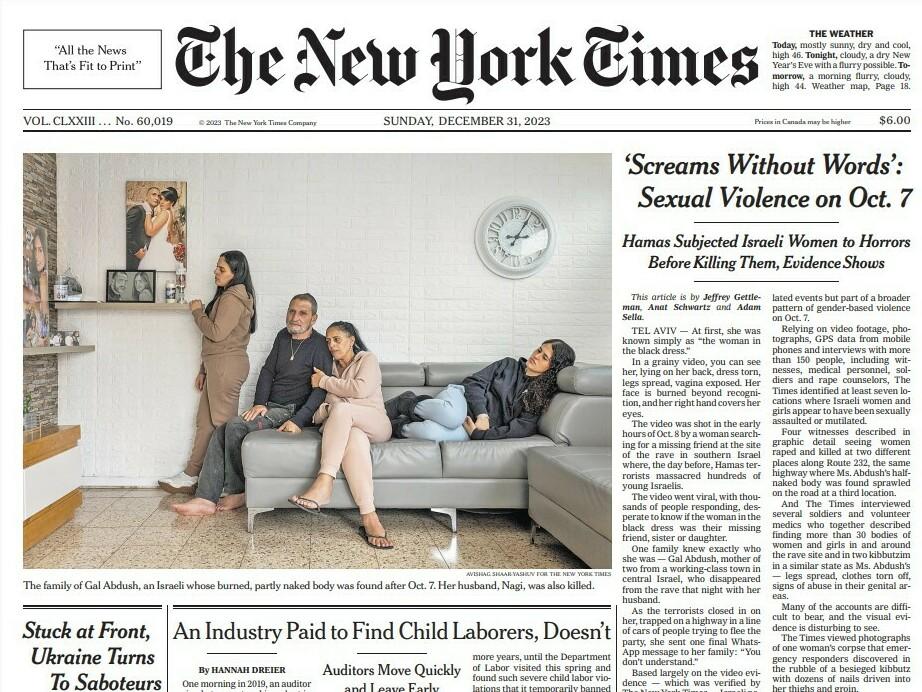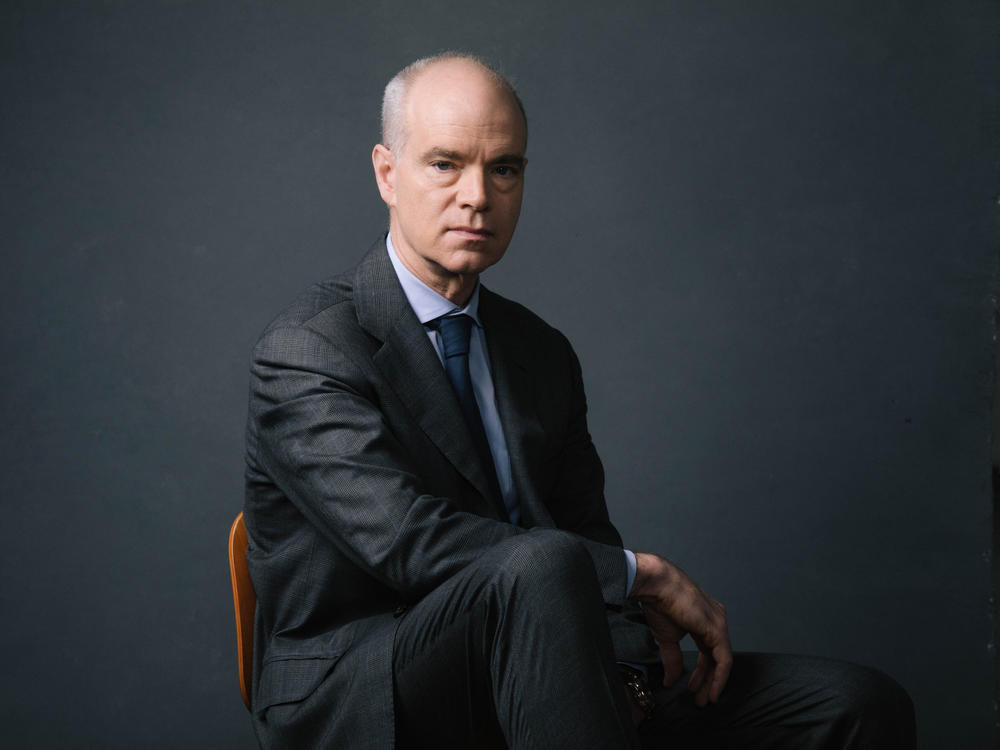Section Branding
Header Content
Newsroom at 'New York Times' fractures over story on Hamas attacks
Primary Content
Tensions at The New York Times over an investigative report on Hamas' use of sexual violence in the October 7th attacks have erupted into the open over the past week with fresh conflict surfacing nearly every day.
The Times crisis reflects a series of cultural divides – between the conventional newsroom and the paper's ascendant audio division; between management and many of the rank-and-file; between factions with differing reactions to the war in Israel and Gaza; and between the two sides of yawning industry chasm over whether to handle dissent internally or air it in public.
The Times Guild, the newsroom union representing nearly 1,500 journalists at the paper, filed a formal grievance yesterday with the paper, saying The Times had violated the terms of its contract. The guild accused top news executives of "targeted interrogation" of journalists of Middle Eastern descent in an investigation of how word of such dissent leaked to The Intercept and other news outlets.
The Guild's announcement said its members "faced extensive questions about the involvement in [Middle Eastern North African employee group] events and discussions and about their views of the Times' Middle East coverage."
The New York Times has denied the union's claims.
Many reporters have become more outspoken since the social protest movements of 2020 in ways that have altered newsrooms and discomfited some of their peers.
A powerful front-page story draws skepticism from audio staffers
At the heart of the newsroom tensions stands a powerful story about sexual violence during Hamas' deadly Oct. 7 attack in Israel. The story, published in late December under the byline of international correspondent Jeffrey Gettleman and two freelancers, said The Times had documented a pattern of sexual assault by Hamas as a brutal strategy. NPR spoke to seven Times staffers for this story.
Critics argued the anecdotes weren't fully nailed down. For example, in the instance of Gal Abdush, whose family was shown in a photograph accompanying the Times story, her brother-in-law told the paper he feared she had been raped. After the story's publication, the man told Israeli journalists he no longer believed there had been a rape, but would not provide the Times with the material that he said changed his mind.
As Times audio producers were preparing to do an episode of The Daily podcast based on the story, they questioned how solid the underlying evidence was that their colleagues had gathered. To date, no such episode has aired, more than two months later.
Their doubts appeared in The Intercept.
Over the weekend, Executive Editor Joe Kahn and his two top deputies confirmed they had commissioned a leak investigation – itself an extraordinary act for a news organization often reliant on leaks of sensitive material for its own stories. (Several former veteran Times journalists told NPR they were taken aback by the turn of events.)
But Kahn wrote in a memo to staffers that it was in response to an unprecedented occurrence: outside media groups had gained access to "confidential planning documents and draft scripts."
He wrote that the paper had expanded ways for journalists at the newspaper to share misgivings and concerns.
"Revealing editing drafts, reporter notes or other confidential materials to outside media erodes trust and undermines our culture of collaboration," Kahn wrote, along with managing editors Marc Lacey and Carolyn Ryan. "No one in our newsroom or company has been or will be scrutinized because of ethnic or national origin... Any such thing would be deeply offensive to us and the Guild's accusation is wrong."
When asked about the accusations contained in the Guild grievance, a Times spokeswoman pointed to the earlier statement. Some other news executives, such as former Wall Street Journal and Bloomberg editor Bill Grueskin, suggested they would also want to stem any leaking of materials about unpublished work.
But the union rejected Kahn's letter as "not true," saying the company had harassed and discriminated against its own journalists in pursuing the identity of the leak to the Intercept and others. The guild said reporters were asked to turn over confidential communications and which colleagues had voiced doubts about the original report. And guild officers said no materials had been leaked.
Union officials said it is not taking any stance on the merits of the article. In some newsrooms, journalists have publicly protested that coverage was too reflexively hostile to Palestinians as casualties climbed. At the Los Angeles Times late last fall, the then top editor barred reporters who signed such protest letters from covering the conflict for three months.
Questions about a reporter's social media posts
The Intercept deepened the controversy by noting the social media postings of one of the freelancers, Israeli documentarian Anat Schwartz. She "liked" anti-Palestinian posts on X (formerly Twitter) after the Oct. 7 attacks, but before she started to work for the paper. "She made valuable contributions and we saw no evidence of bias in her work," Times International Editor Phil Pan said in a statement. "We remain confident in the accuracy of our reporting and stand by the team's investigation." He termed those prior social media posts "unacceptable."
In February, the same reporting team acknowledged concerns about the story and sought to offer further substantiation in a follow-up piece involving an investigation by the United Nations. That did not assuage the staffers at the Daily resisting the story.
The audio team has been publicly burned in the recent past. In late 2020, The Times was compelled to retract the core of an investigative podcast series from star reporter Rukmini Callimachi and producers drawn from the Daily's team when the fantastical claims of its key source unraveled.
On Monday, Times publisher A.G. Sulzberger delivered the Reuters Memorial Lecture at Oxford University, with a focus on the importance of independent journalism in a divisive age. He pointed to coverage of the Middle East as a particular flashpoint.
"Journalists don't serve the public by trying to predict history's judgments, or to steer society to them," Sulzberger said. "Our job as journalists is firmly rooted in the present: to arm society with the information and context it needs to thoughtfully grapple with issues of the day. The belief that an informed public makes better decisions is perhaps the most hopeful conceit of an independent press."


